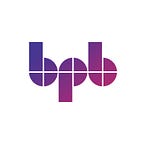Research opportunities for IoMT and IoNT
Healthcare is one area where the IoT technology can have a substantial influence since low-cost devices and sensors can be utilized to develop medical aid systems that reduce deployment and maintenance costs while simultaneously enhancing patient and family quality of life. Sensors generate enormous volumes of data, and IoT devices have no way of managing or retaining that data since they lack the computational power. Because of this, cloud and fog computing technologies can be used to make up for the limits of the Internet of Things by increasing the capacity of IoMT applications.
IoNT is a network of interconnected, incredibly small gadgets that can transport data back and forth. An IoNT system can incorporate nanotechnologies for a wide range of applications. It’s possible that manufacturers who use IoNT sensors to keep tabs on things like carbon emissions from exhaust systems and temperature and humidity levels can save money on electricity.
Findings and recommendations for additional research after examining current advancements in the IoT, IoE, and IoNT areas in this chapter. This study identified and addressed the most critical present and future problems, as well as scenarios for the probable future development of their applications, which were then included in the blog.
It is important to prioritize the following research directions, recommendations, and actions in the future:
- It is necessary to educate a large number of highly qualified technical and management workers. This is a massive undertaking.
- When it comes to reducing the amount of energy consumed by IoT devices, it is critical to implement energy harvesting technology.
- A formal international agreement on interoperability standards (also known as interoperability standards).
- In the context of application layer protocol standardization, the phrase “protocol standardization” refers to an international agreement on the subject.
- That’s what we mean when we talk about pervasiveness: the integration of the IoT with the pervasive computer environment, which we call pervasiveness.
- By utilizing the sensor technology, we can improve the capabilities of our sensors.
- For IoT operating systems, a resource distribution mechanism that is widely accepted must be implemented.
- For the IoT, it is important to have a robust network architecture.
- Creating fog computing components that are connected to the IoT.
- Standardization of wireless sensor network interoperability: Wireless sensor network interoperability standards are being developed.
- Things like the right to work, the right to privacy, and the right to accurate information are all examples of ethical norms.
- The hardening of devices is necessary in order to prevent hackers from attacking them. The widespread use of blockchain technology as well as the necessity for more secure IoT data encryption, are two examples.
- This protocol must be followed in order for the Internet of Things devices to be detected. When utilizing Shodan, it is possible to search for IoT devices.
- The IoT ID Protocol necessitates the implementation of identity management.
Hence in summary, the Internet of Nano Things (IoNT) has the potential toimprove multiple industries, including healthcare, energy efficiency, and the environment.
Hope this was helpful.
